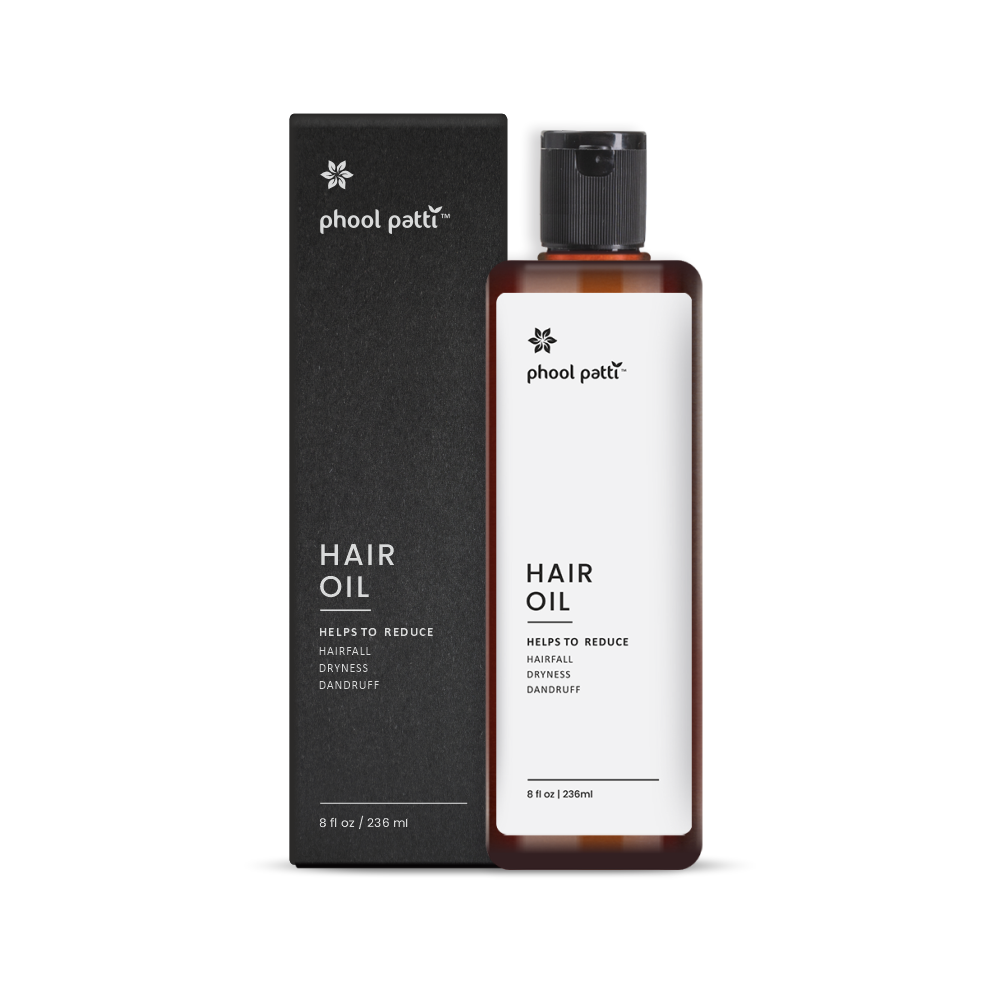Henna Paste Set of Two
Editor's Choice Award Winner
Winner of the 2025 International Beauty Shortlist Award, our Henna Paste was recognized on a global stage for its natural excellence. Among seven awards won by Phool Patti, this honor reflects the product’s place in a league of truly exceptional, ethical, and sustainable beauty, celebrated through an independent and unbiased judging process.
PhoolPatti Henna Paste is a tub of herbal richness, offering natural hair coloring that strengthens, conditions, and promotes scalp health. PhoolPatti Henna Paste offers a multitude of benefits for your hair. It not only gives your hair a vibrant, long-lasting color but also enhances its natural beauty. With each use, enjoy increased shine and better manageability. Additionally, it helps halt hair graying, giving your locks a lustrous, natural color.
Self-Study Test:
✔ 73.3% of customers reported using Henna Paste, making it our best-selling product.
✔ 93.8% of users highlighted its hydration and moisturizing benefits.
✔ 87.5% of respondents found it easy to use and incorporate into their routine.
✔ 87.5% of users reported high satisfaction with its performance.
🗣 Customer Testimonial: "Never had such an efficient, all-natural hair care product before!"
*Based on real customer feedback & product survey. Individual results may vary.
Part hair in three sections.
Take a small section, apply henna paste liberally from the roots
towards the tips.
After every section application, start gathering each section on
the top of the crown to create a bun.
Make sure the entire hair is applied evenly. Take a plastic
shower cap or a cling wrap and cover your hair.
Leave it on for 3-5 hours. Wash with water only and use some
conditioner.
Shampoo next
For detailed steps click here
Natural Henna, Cocos nucifera milk, Aloevera, Coffee Arabica, Fullers earth, Lemon Extract, Avacado, Fenugreek, Nigella Sativa, Sesamum indicum, Gooseberry, Ginkgo biloba, Moringa Oleifera, Bhringraj, Brahmi, Curry leaves, Beetroot, Manjishtha, Ashwagandha, Hibiscus Sabdariffa, Ocimum Sanctum, Cinnamon, Neem, Sweet Almond oil, Olive, Fruit Oil, Mustard oil, Castor Oil, Amla oil, Coconut oil, Rosemary, Lavender, Peppermint, Eucalyptus Globulus EO, Tea Tree
Hero Ingredients
Frequently Asked Questions
-
Henna (that goes by the rather impressive scientific name, Lawsonia inermis) is a flowering plant that has been used to dye hair, skin, and clothes for thousands of years. The leaves of the shrub are the source of the reddish-brown color that has also been used as a form of body art in the region’s culture and traditions.
The plant can be found in the subtropical region of Asia, Africa, and northern Australia. The Indian subcontinent, particularly, has a rich history of the usage of henna and still cultivates the most high-quality henna crops in the world.
The crops are then processed and used to create intricate body art (typically on palms, forearms, feet, and legs) and to make henna hair dye. The usage of Henna goes back to over 6000 years: accounts have shown Cleopatra, Nefertiti, and the ancient Romans used henna as hair dye.
-
When the henna leaves are ground and worked into a fine paste, it is applied to hair, whereupon its active dye molecule, Lawsone, gradually migrates into the outer layer of hair binding to the hair protein creating a fast reddish stain. Lawsone essentially sticks to hair without having to open the cuticle and it goes off after a few washes, like most products with organic origins.
The longer you keep the henna paste on your hair, the more these Lawsone molecules will have the chance to migrate into the keratin of the hair. The color darkens as the dye molecules absorb deeper into the hair binding to more protein and as it dries in contact with air.
Henna also maintains the hair’s natural highlights and undertones, creating a more natural-looking dye than your regular chemical hair dyes.
-
Henna is an ancient medicinal plant that has been used as a natural dye for over 4,000 years. It has antifungal and antimicrobial properties that are believed to be beneficial for the hair and scalp, particularly for premature graying and reducing dandruff. This has been borne out by many individual studies and real-time cases.
Besides coloring hair in the safest way possible, Henna has plenty of other benefits. It helps balance out oil production on the scalp while promoting hair growth. At the same time, it also repairs and strengthens hair and detoxes your scalp and hair, while it colors. All this goes to ensure healthier hair in the natural way.
Henna, found in nature, has an affinity with the hair’s keratin, meaning it gives amazing lasting color without the need for a chemical mordant which ‘fixes’ the color in place. It is also a wonderful ingredient to use if you want to add body to the hair, increase shine, and make your locks look and feel beautifully healthy.
To sum up, it is both a treatment for the hair as well as a natural colorant.
-
Henna ensures a permanent change to hair. As Henna coats the outside of the hair, the color grows out naturally with hair growth. The Henna color is most vibrant in the first few weeks on your hair and can fade over time.
The only natural way to remove Henna is to let your hair grow out or do an oil cleanse.
-
The herbs and pigments found in Henna plants are effective and are time-proven for use on all hair types. Whether you have Caucasian, Curly, Frizzy, Thich, Thin, Asian, or African hair, Henna as a hair color will do you only good, without any side effects.
-
Sure, you can.
Majority of customers switch over to our Henna because of bad reaction and side effects from chemically- dyed hair. As our Henna is all natural and does not contain any PPD’s or metallic salts, you will not experience any damage using our product on top of chemically treated hair.
In fact, you will notice Henna help repair your damaged hair. We do recommend always doing a strand test to check what color your hair will end up in being before applying the Henna to your entire head. You can do this test testing on a small patch of hair behind your ear.
We usually suggest waiting a few weeks between chemically coloring and coloring with Henna so the chemicals can fade and make the job easier, but you can use the Henna as soon as you wish. It will help repair any damage caused by the chemical dye earlier and leave your hair healthy and strong.
-
Henna is a wonderful alternative hair dye for people who have allergies to synthetic dyes. The ingredient has an incredibly long history of use and your chance of being allergic to it is very low indeed (unless you have a genetic condition called G6PD Deficiency in which case you should not use this.) However, if you are still concerned, we suggest you conduct a patch test by applying a small amount of Phool Patti Henna paste to your forearm, leaving it for two hours before removing, then waiting for 96 hours to ensure you have no redness or irritation.


















